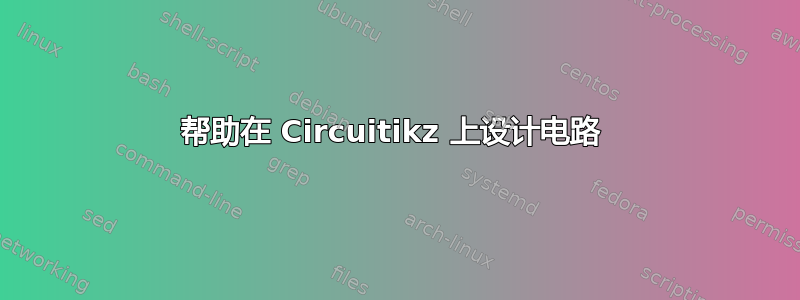
答案1
这小段代码应该可以帮助您入门:
\documentclass[border=10pt]{standalone}
\usepackage[siunitx, RPvoltages]{circuitikz}
\begin{document}
\begin{tikzpicture}[american]
\draw (0,0) node[sground]{} to[I, l=$I_1$] ++(0,3)
to [short, -*] ++(2,0) coordinate(dot1)
to [C, l2=$C_{ox1}$ and \SI{0.097}{\pico\farad}] ++(0,-3)
node [sground]{};
\draw (dot1) to[L=$L_s$, a=\SI{5.18}{\nano\henry}] ++(3,0);
\end{tikzpicture}
\end{document}
这里拥有所有的“工具”:如何以两种不同的方式使用堆叠标签、信号地、使用坐标来停止和重新启动绘图,以及极点的语法。
从这里开始,绘制电路只需要阅读手册并找到形状和组件的名称。尝试一下,如果遇到困难,请随时提出具体问题!
答案2
感谢您的帮助! ;)
\documentclass[border=10pt]{standalone}
\usepackage[siunitx, RPvoltages]{circuitikz}
\begin{document}
\begin{tikzpicture}[american]
\centering
\node[sground] (ground1) at (0, 0) {};
\node[sground] (ground2) at (4, 3) {};
% Left hand side
\draw (ground1) to[short, *-] ($(ground1) + (-1, 0)$) to[R, l2= $R_{sub1}$ and 131Meg] ($(ground1) + (-1, 2)$);
\draw (ground1) -- ($(ground1) + (1, 0)$) to[C, l2_= $C_{sub1}$ and 0.002p] ($(ground1) + (1, 2)$) -- ($(ground1) + (-1, 2)$);
\draw ($(ground1) + (0, 2)$) to[C, l2= $C_{ox}$ and 0.097p, *-] ($(ground1) + (0, 4)$);
\draw (-4,2) node[sground]{} to[I, l2=$I_1$ and AC 1] ++(0,2) to [short, -*] ++(4,0);
% Right hand side
\draw (ground2) to[short, -] ($(ground2) + (0, 0)$) to ($(ground2) + (0, 1)$);
% Horizontal components
\draw ($(ground1) + (-1, 4)$) to[short, -] ($(ground1) + (0, 4)$) to[american inductor, L=$L_s$, a= 5.18n] ($(ground1) + (2, 4)$) to[R=$R_s$, a= 4.82] ($(ground2) + (0, 1)$);
\draw ($(ground1) + (0, 4)$) to[short, *-] ($(ground1) + (0, 6)$);
\draw ($(ground2) + (0, 1)$) to[short, *-] ($(ground2) + (0, 3)$);
\draw ($(ground1) + (0, 6)$) to[C=$C_p$, a= 0.03p] ($(ground2) + (0, 3)$);
\end{tikzpicture}
\end{document}





